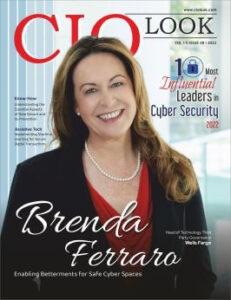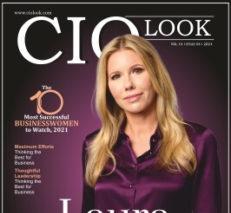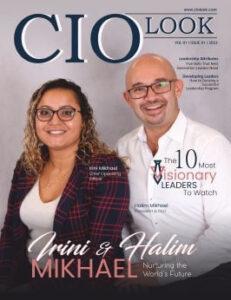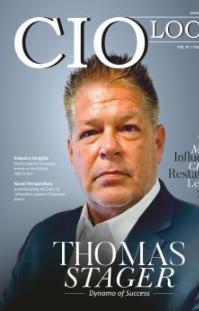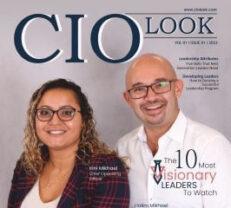










Inanerawhereglobalsupplychainsarebeing
redefinedbydisruption,innovation,and sustainability,theroleofvisionaryleadershasnever beenmorecritical.CIOLookputsaspotlightonShekhar Natrajan,FounderandCEOofOrchestro.aieditionof The Most Impactful Business Leader to Follow in Supply Chain.Thispublicationcelebrateshisremarkable contributionsthataresteeringorganizationsthroughthe complexitiesofmodernlogisticswhilesettingnew benchmarksforexcellenceandresilience.
Shekharhasnotonlyadaptedtotheseismicshiftscaused bydigitaltransformationandgeopoliticalshiftsbuthas

alsoproactivelyreimaginedthefutureofsupplychain management.Fromleveragingadvancedtechnologieslike AI,IoT,andblockchaintochampioningsustainable practicesandbuildingmoreresilientnetworks,their strategiesareshapingthesupplychainoftomorrow.
Asyoudiveintohisstory,you'lldiscoverinsightsand strategiesthattranscendtheconfinesoftraditionalsupply chainmanagement,offeringvaluablelessonsfor businessesacrosstheglobe.Wehopethiseditionservesas bothatributetoShekhar’sachievementsandasourceof inspirationforthereaders.


Driving Logis�cs Industry Transforma�on with Ver�cal AI Innova�on
16 22 Supply Chain Transformation The Evolution of Supply Chain Management
Challenges and Opportunities
How can Businesses Improve their Supply Chain Visibility?
Senior
Managing
Associate



Technical
Technical


Shekar Natarajan Chief Execu�ve Officer and Founder orchestro.ai
Driving Logis�cs Industry Transforma�on with Ver�cal AI Innova�on
Known for his forwardthinking approach, Shekar con�nually inspires those around him with his dedica�on to pushing the boundaries of tradi�onal logis�cs prac�ces.
The logistics sector has long been the backbone of global trade, ensuring that goods move smoothly across borders to reach consumers on time. Although warehouse automation and real-time data sharing across supply chains are aspirational goals, the logistics industry has struggled to implement innovative solutions that enhance visibility and optimize costs, capacity, and consumer satisfaction. As companies work to refine their logistics networks, they’re vision is a future where supply chains meet rising consumer demands and contribute to environmental responsibility, pushing the industry towards a sustainable, collaborative model. Today, the sector is being exposed to new technological advancements that will transform traditional operations into more efficient, transparent, interconnected and inter-operable systems.
Shekar Natarajan, the Chief Executive Officer and Founder of orchestro.ai, demonstrates visionary leadership that has redefined supply chain operations across major corporations. Known for his forwardthinking approach, Shekar continually inspires those around him with his dedication to pushing the boundaries of traditional logistics practices. His strategic mindset and collaborative approach have led to the implementation of innovative systems that challenge established norms in logistics. He sets new standards for operational efficiency and costeffectiveness through his leadership, building a robust foundation for a supply chain network that promises better integration and enhanced consumer experience.
Under Shekar's guidance, orchestro.ai is setting out to revolutionize the logistics industry by building the world’s first open logistics network platform powered by AI. Unlike the isolated networks of large logistics providers, Orchestro.ai’s vision is to establish a unified system that allows seamless communication and interoperability across all logistics players. By connecting carriers and creating an open operating system, orchestro.ai aims to provide complete visibility into supply chains, bridging gaps and driving efficiency within a traditionally fragmented industry. Using the power of AI, this innovative approach holds the potential to reshape logistics by increasing accessibility and reducing complexity, positioning Orchestro.ai as a pre-eminent force in the transformation of how global supply chain networks work.
Let's delve into Shekar's vision for a collaborative logistics industry:
Shekar was hired out of Georgia Tech into Coca-Cola Consolidated by his current COO and mentor, Ron Hammond, over 20 years ago. There, he first learned how to think differently about the supply chain, developing a radically different delivery system that ultimately became an industry standard.
From there, his career moved through PepsiCo, Anheuser Bush InBev, and the Walt Disney Company in ever-increasing responsibilities but always in the pursuit of saving money and operational excellence. It wasn't until his time at Walmart that he really started getting into logistics and the fulfilment network, as he led and developed the successful startup of Walmart’s e-commerce fulfilment network groups.
Shekar did similar work at Target, helping them enable a buy-online and in-store pickup system. This led him to a role at American Eagle Outfitters. There he accelerated growth and enhanced the profitability of the organization with a reimagined end-to-end supply chain for speed, cost, coverage, and consumer experience. While at American Eagle, he led the wholly-owned subsidiary Quiet Platforms.
This was a first-of-its-kind open-source tech platform, enabling digital orchestration across the supply chains of multiple “competitive” companies. While his experiences at all these major corporations helped build the way, his stint at Quiet Platforms was probably the most eye opening and important role; it was there that the idea for Orchestro.ai was born.
As CEO and Founder, Shekar owns the vision and strategic architecture to define Orchestro. In this role, he makes a case for why the industry must change, paints a picture of a new logistics ecosystem collaborating to improve service, costs, capacity, and sustainability, and then defines the platform operating model and enabling technologies (AI) to bring an open and shared network to life.

Shekar’s strategic mindset and collabora�ve approach have led to the implementa�on of innova�ve systems that challenge established norms in logis�cs.
Emerging from this vision of an AI fuelled transformation, is the energy that carries the Orchestro.ai team forward. The strategic architecture defines the building blocks—their strategies and capabilities—that bring the vision to life. Constant team contact and interaction with key customers, channels, carriers, and complementary services is a hallmark of Orchestro.ai.
His key role is building the team. Enrolling experienced hires with deep industry expertise and the relationships necessary to build trust to accelerate commerce and marrying them with young, hungry, diverse Tech/AI team able to bring new technologies to bear is no easy feat. It is a constant search process levering his vast network built over years in the industry.
Finally, the Founder Mode is constant fundraising. It’s not just about money. It is gauging the appetite of investors, getting their feedback, learning about building a business, and how to aggressively to go to market and grow
For the past ten years, the idea of an open, sharing logistics network has been bubbling in his mind. Shekar’s early work at Walmart and Target teased the possibilities, which led to the opportunity at American Eagle Outfitters and the formation of Quiet Platforms.
The starting point is listening. He is constantly on the phone and traveling. Customers and partners will tell their pains and the gains they seek. To often this approach was not enough as it just incremental asks versus transformational thought.
One must observe the industry strategically with a holistic end-to-end view, understanding how new enabling technologies like AI can change the operating environment. Paying attention to other disruptive forces like the emergence of new labor and supply chain models is key. A disciplined, creative process runs these observations through strategic frameworks and

As CEO and Founder, Shekar owns the vision and strategic architecture to define Orchestro’s Whys, Whats, and Hows.
models to postulate future scenarios and develop new ideas.
This process informs the broader search for new ideas; for example, the “physical internet” concepts are inspirational. New patterns constantly emerge.
Shekar’s strategic leadership helps frame and design his vision and operating model, identifying these new patterns. Reevaluating and building upon his vision every few weeks, constantly throwing new stuff against the wall.
Together, the team has iterated on “physical internet” concepts, defined platform and ecosystem needs, identified untapped data sources, defined new operating capabilities to support business processes and networks, and imagined new AI powered products.
This is performed in a structured but ad hoc way to support his schedule and how he thinks. With this basic architecture, he can go out to the world, test ideas, and build upon them, clarifying the go-to-market opportunity. It is logistics “jazz”.
Shekar believes in his people. He assumes everyone is, or can be an “A” player, giving them a chance to excel. He provides clear intent, sometimes giving stretch assignments to push them out of their comfort zone. He believes this is the way to cultivate extraordinary performance. Respect them, give them opportunities, and provide the necessary support.
In parallel, a basic principle is a driving a commitment culture. You are your word. You do what you say and commit to. In a collaborative process there can be conflict with the goal of reaching commitment. Once there is commitment, the hard work begins. Everyone knows he considers broken commitments to be a broken trust; an unacceptable detriment to the team.
Orchestro is a family, his family. We’re in the trenches together, working on a shared vision to create a different reality for a future world. It is a way to cultivate excellence and collaboration, plus have a little fun along the way. Sealed with two-way loyalty that will provide great reward those who do a great job.

Shekar’s approach to operational turnaround and startup elements are strikingly similar: a clear vision about what’s possible and making the case, building a talented team with a commitment culture, and pushing people hard.
The difference is in a large enterprise, operational turnaround are more antibodies at the senior levels, and the starting point is often demoralized exhausted teams. It takes more energy to escape the disorder and chaos and to get the people out of their resignation. This demands constant communication of the possibilities and resulting rewards and driving new commitments and their fulfilment.

He highlights that creating the future while running and fixing the current business is a bifurcation challenge! Practically, it requires segmenting the organization into two distinct, focused parts. Very few people can handle both at the necessary level of specificity. It’s hard enough to find great people who can write product requirements, let alone someone who can see how those products fit in a pattern to create a new business model.
Shekar is disciplined in focusing teams, and when he’s with each, he must have the right hat on to ensure discipline and focus on the right work. Mixing both confuses people, and they will spin.
To stay current with emerging AI technologies and trends in business innovation, Shekar reads CIO magazine. Living in Silicon Valley, it’s in the water. It’s all around in every interaction, where one will hear about the next new thing. It can be a little overwhelming, but it’s not as if technologies explode on the scene with no warning.
They bubble, and many have curves like Moore’s Law For example, it was just a matter of time before mobile apps, integration, widespread bandwidth, IoT, and AI created a new logistics ecosystem. The key is to have a business lens filter—what design problems do his customers have, and how can they be solved through technology? How can he make a strategic, innovative solution?
As an example, one design problem is integrating the logistics ecosystem onto a platform to facilitate an open network. It’s more than just creating another marketplace (there are lots of those in logistics). The technology curve enables collaboration and coordination at a scale. It’s our job to bring that to life.
Work-life balance is extraordinarily important to him. Shekar always takes time out in the morning to spend time with his wife and three-year-old son, who are the joys of his life. He also takes time out to pursue his love of art. He is a practiced painter, particularly of Indian deities.
Shekar sets new standards for opera�onal efficiency and cost-effec�veness through his leadership, building a robust founda�on for a supply chain network that promises be�er integra�on and enhanced consumer experience.
Shekar advises aspiring business leaders who want to create transformative changes in their industries that any transformation is not easy. The table stakes are dedicating yourself to an all-consuming journey and surrounding yourself with great people. It takes energy to overcome inertia and busyness to create the conditions for change—externally and internally.
He believes, “Every interaction is an opportunity to step forward. In these interactions, you are educating, aligning, managing trade-offs, and fighting for new commitments.”
This requires more than pitch decks and high-level overviews. It is a clear vision and detailed strategic architectural view of the changes that must happen—new things that must be created, things that must change, and the things that can remain. All of that is followed up by the WIIFM that drives behaviors.
Orchestro.ai's long-term goal is to build the world's first open network platform in the logistics industry. Today, parcel transportation can be described as a few ‘closed networks’ of carriers and 3PLs owned by Amazon, FedEx, UPS, and USPS and by a long tail of regional and local players.
This multi-closed tapestry of networks is neither accessible to most companies nor efficiently connected. Shekar is building the technology to connect all the carriers and a common operating system to allow full visibility and interoperability. This will transform how the fragmented players interact with one another and remove the intricacy and inefficiency inherent in the current logistics industry


Overthelastcentury,supplychainmanagementhas
undergonegreatchanges,transformedfromsimple logisticsintoacomplexintegratedfunctionthat canbeconsideredabackboneofamodernbusiness.With thewideningofglobalmarketsandthecontinuedriseinthe expectationsoftheconsumer,nothingismoreglaringthan theeffectivemanagementofSCM.
This article explores the key milestones in the evolution of SCM, from technological advancements, globalization, and changing consumer behavior to reshape the industry
Therootsofsupplychainmanagementdatetotheearly yearsofthe20thcentury,whenindustriesbeganto transformintofactoriesdominatedbymassproduction techniques.Assuch,duringthisperiod,logisticsand inventorymanagementwereaboutthephysicalhandlingof goods.Atthispointintime,pioneeringfiguressuchas FrederickTaylorcreatedscientificmanagementtenetsto gainefficiencyinmanufacturing,thusbecomingthebasis ofbetterinventoryandlogisticspractices.
Theterm"logistics"becamepopularduringthemilitary operationsofWorldWarII.Afterthewar,businesses realizedthatlogisticsplayedacrucialroleinmanaging complexdistributionnetworks.Conceptssuchasjust-intime(JIT)inventory,pioneeredbyToyota,emergedinthe 1960sand70storeducewasteandimproveefficiencyby synchronizingproductionscheduleswithdemand.This markedtheearlystagesofbecomingmorestructuredwithin supplychainoperation,butemphasizingcoordination amongthesuppliers,manufacturers,anddistributors.
Inthe1980s,businessesbegantorealizethe interconnectednessofdisparatefunctionalareasinasupply processandthustheneedfortheterm"supplychain management."CompaniessuchasProcter&Gambleand Unileverstartedtointroduceintegratedsupplychain strategiesthattookintoaccounttheentirespectrumof activitiesfromsourcingrawmaterialsrightdownto deliveringfinishedproductstoconsumers.Theoverriding imperativesdrivingthismovementwerecostreductionand theimprovementofservicelevels.
The1990sweretheyearsofmajortechnological development,whichsignificantlychangedSCM. Computersandtheirapplicationsinsoftwareenablednew waysofmanaginginventoryanddemandforecasting. TechnologiessuchasbarcodescanningandlaterRFID,or Radio-FrequencyIdentification,enabledreal-timetracking ofproducts,thusimprovingvisibilitythroughoutthesupply chain.
EnterpriseResourcePlanning(ERP)systemsemergedas thecommonsolution,whichhelpedtoimplementand improvethevariousprocessesandimprovethedecision makingaswell.Thesesystemshelpedtoachieveclearer cooperationbetweendepartmentsandimprovesupplychain performance;thelatterwastrulyrevolutionary
TheGlobalizationofSupplyChains.
Whentheprocessofglobalizationaccelerated,thesupply chainsmadethesupplychainslongerandmoredispersed geographically.Businessbegantoimportmaterialsand goodsfromothercountries,whichinturnwasalsoaplus andaminus.Itgraduallyevolvedintoanissueofhandling extendedsupplychain,multiplesupplierandinternational standardsandpolicies.
Otherfactorswhichcontributedtothischangewasthe advancementofe-commerceaswell.Suchgiantslike Amazonsetnewstandardsforthecustomersintermsof deliveryanddeliveryspeed.ThischangeforcedtheWorlds traditionalretailersandmanufacturerstolookfornew supplychainmodelsinordertosustainthemselves.
Duetoincreasedawarenessamongtheconsumersand environmentalconcerns,supplychainmanagementinthe 2010s,wasunderpressuretobecomesustainable.Atthe
firstlevel,organizationswereadoptingcertainsustainable non-discretionarystrategieslikeemissionsreduction,waste reductionandsourcing.Suchtrendsnotonlyplaced organisationsinalegalstandingbutalsooverpoweredtheir brandsandtheallegianceoftheirconsumers.
Thiseraismarkedbytheintegrationofdigitaltechnologies inmanufacturingandsupplychainprocesses;itisanera thatdefinesIndustry4.0,wherecompaniesgainmore knowledgeabouttheirprocesses,thankstoIoT,AI,andbig dataanalytics.
IoTdevicesenableinstantaneoustrackingofinventoryand equipmenttopredictwhenmaintenanceisrequired.AI algorithmsanalyzevastamountsofdatatooptimizesupply chaindecisions,orhowdemandmightfluctuate,and thereforereducethescopeofinterruptions.These technologiespositionSCMforitsnextlevel:agility, responsiveness,andacustomer-centricapproacharenow theruleofthegame.
TheCOVID-19pandemiclaidbaretherealityofsupply chainresilienceandtheneedforresponsiveness. Companiesunderwentunprecedenteddisruptionsfromthe pandemicthatledtobusinessreconsiderationregarding theirsupplychains.Today,companiesarefindingtimeto engageinriskmanagement,diversifytheirsourcesof suppliers,andembraceversatilelogisticssolutions.
Theevolutionofsupplychainmanagementrepresents broaderchangesintheeconomic,technological,andsocial landscapes.Fromearly,logistics-centeredorientationstoits contemporarycomplexityoftechnologicalecosystem,SCM hasnowevolvedintoanindispensablecomponentofa business'sstrategicthinking.Itsfuturedirections,as discussedlater,includecontinuedintegrationwithdigital technologies,practicesofsustainability,andresiliencein termsoffurtherimprovedcapabilitiesforfuturereadiness.
Organizationsthatadapttothesechangeswillbemore capableofsatisfyingconsumerneedsandmanagingavery unstableglobalenvironment.ThejourneyofSCMisneverending,andthepotentialforinnovationremainslimitless.




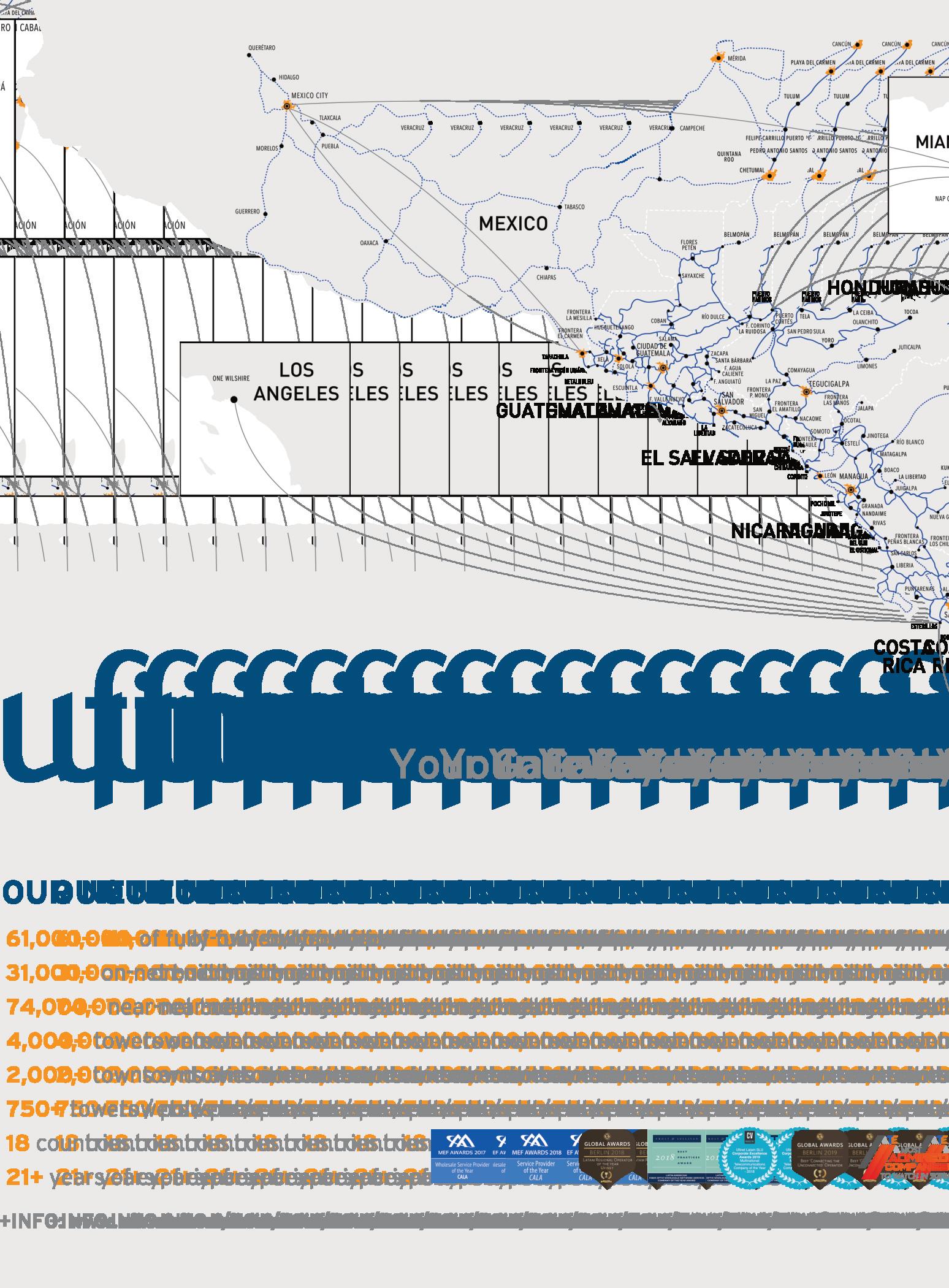





Intoday'sfastandincreasinglyglobalmarketplace,
supplychainvisibilityhasbeenacriticalbusiness successfactor.Improvedvisibilityallowsbusinessesto tracktheirsupplychains,makeeffectivedecisions,and respondquicklytomarketchanges.
Here's how businesses can make improvements in supply chain visibility to improve efficiency, decrease costs, and increase customer satisfaction.
Supplychainvisibilitybasicallydefinestheextentof monitoringortracingofthecomponent,materials,and productsacrossthesupplychain.Moreextensivevisibility empowerstheorganizationswithinformationandbetter knowledgeofwhat'sgoingon,identifyingpossible bottlenecksinprocessesandtakingtimelypreventive decisions.
KeyBenefitsofSupplyChainVisibility
• ImprovedDecisionMaking:Real-timedataenables businessestomakeinformeddecisionsquickly
• IncreasedAgility:Withvisibilityintotheirsupply chain,companiescanquicklyadapttochanges,suchas demandfluctuationsorsupplydisruptions.
• CostCutting:Betterobservationandcontrolmean thatwastagesarereducedconsiderably,andwithbetter inventorycontrols,thegeneralcostiscontrolled.
• CustomerSatisfaction:Businessescangivetheright deliverytimelineandproactivelysolveproblemsif thereisgoodvisibility
StrategiestoImproveSupplyChainVisibility
1.InvestmentinTechnology:TheimplementationofIoT technologiesallowscompaniestocollectreal-timedata fromdifferentpointswithinthesupplychain.
Sensorscantrackthelocationandconditionofgoods,and companiescan,therefore,alwayshavevisibilityintothe statusoftheirproducts.
Blockchaintechnologyprovidesforatransparent, immutableledgerforalltransactionsconductedwithinthe supplychain.Suchtechnologyenhancestraceabilityand accountability,providingequalaccesstoallpartiesto informationinrealtime.
Theefficiencyofusingcloud-basedSCMplatforms enhancesteamworkofsuppliers,manufacturersand distributors.Cloudsolutionsenhancedatadissemination andmakeiteasytoviewthepositionsavailableinthe supplychainnetwork.
2.LeverageAdvancedAnalytics:Bigdatatoolsareuseful toassistthebusinessinprovidinganunderstandingofthe unstructuredsupplychaindataset.Predictiontechnology canpointtolikelydisruptionsandvariationsindemand, therebyaffordingpreemptivesteps.Anotherapproach mightbeasettingofkeyperformanceindicators(KPIs)and thecheckingofthematfixedintervalscanalsogivesome insightsintotheperformanceofasupplychain.
3.EncourageCollaborationandCommunication: Employeesintheprocurementteam,logistics,andthesales teamshouldbenotifiedandinagreementwiththegoalsof theothertoavoidconflict.Strongrelationshipwith suppliersisbuilt.Thiswillalsoenhanceproperflowof informationandmoreresponsivesupplychainsincethetwo willbeinteractingfrequently.
4.InventoryManagementImprovement:Thereismuch morevisibilitywhereasystemisabletotrackitsinventory innearrealtime.Thesetechnologiescanhelpbusinesses understandwhattheyhaveinstock,whatproductstheysell lessof,andthosethattheyhavemoreofforelimination. JITapproachtoinventorymightenhancevisibilityby decreasinginventoryand,thus,increasingitsaccuracy basedonactualconsumerneed.Thismethodrequiresgood relationshipbetweentheorganizationandthesuppliersand goodcommunication.
5.EmployVisibilityToolsandPlatforms:The centralizationthatthecontroltowersgivethereal-time monitoringofthesupplychainwillprovidean understandingofawholesupplychainandmanagementof riskintermsofresponsestodisruption.Visibilitycanbe
considerablyimprovedwithsupplychaincollaboration amongdifferentstakeholdersiftheplatformappliedallows easyinformationsharinganddatacommunicationto developtransparencywithinthesupplychain.
6.ContinuousImprovementandTraining:Auditing supplychainprocessesregularlyhelpstoidentifytheareas wherevisibilityislacking.Continuousassessmentleadsto improvementsandhelpsbusinessesstayaheadofpotential issues.Trainingprogramsforalllevelsofemployeeswill ensurethattheyunderstandtheimportanceofsupplychain visibilityandcanusethetoolsandtechnologiesproperly
Supplychainvisibilityisnolongeracompetitiveadvantage butanecessityinthecurrentdynamicbusiness environment.Investmentintechnology,enhancementof collaboration,andadoptionofadvancedanalyticsarekey stepstoprovideinsightsneededforthecomplexities involvedinnavigation,riskmitigation,andeventually achievingoperationalexcellence.Prioritizingvisibility enablescompaniestoachieveefficiency,costsavings,and customerdemandswithlong-termsuccessinanevolving market.

















